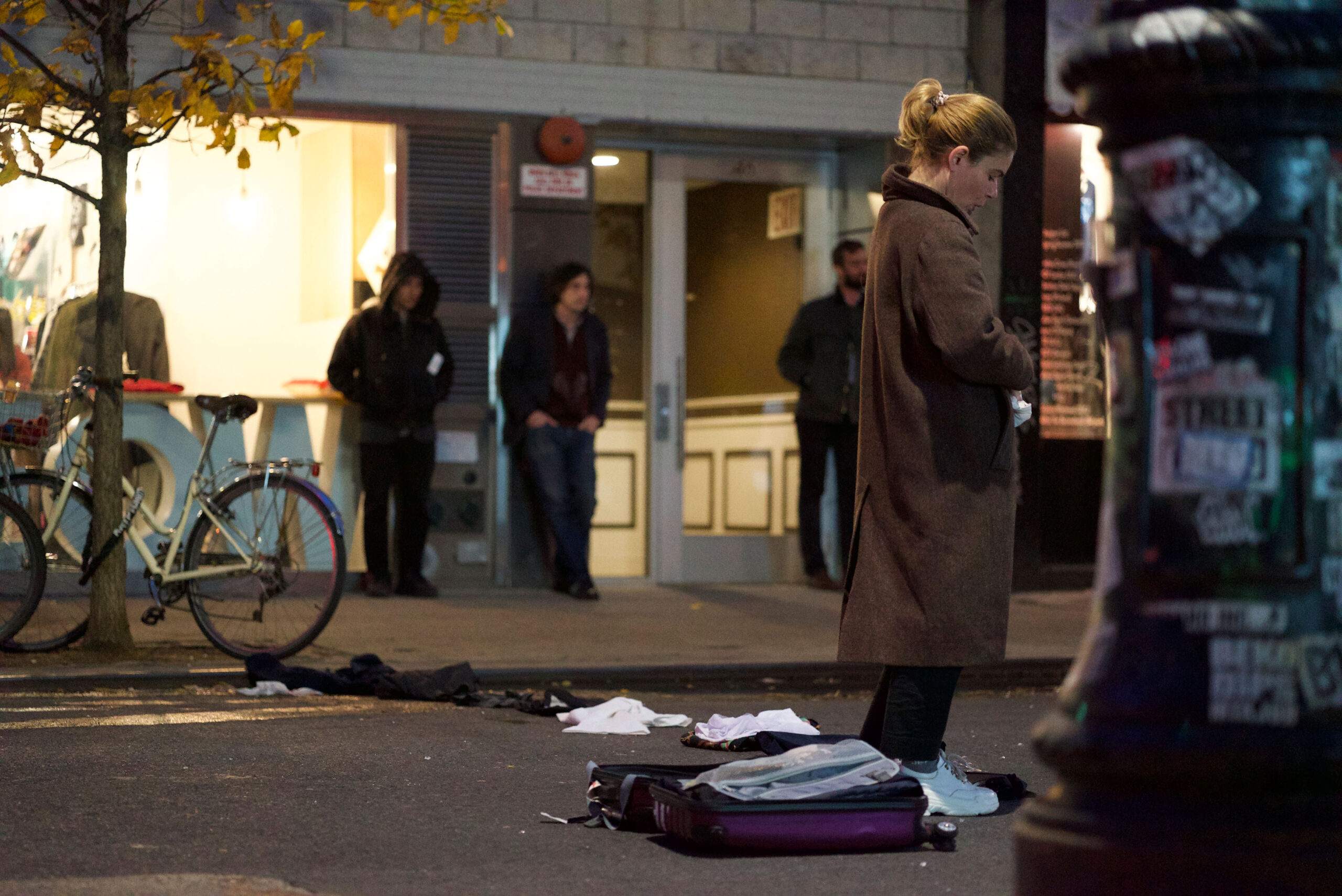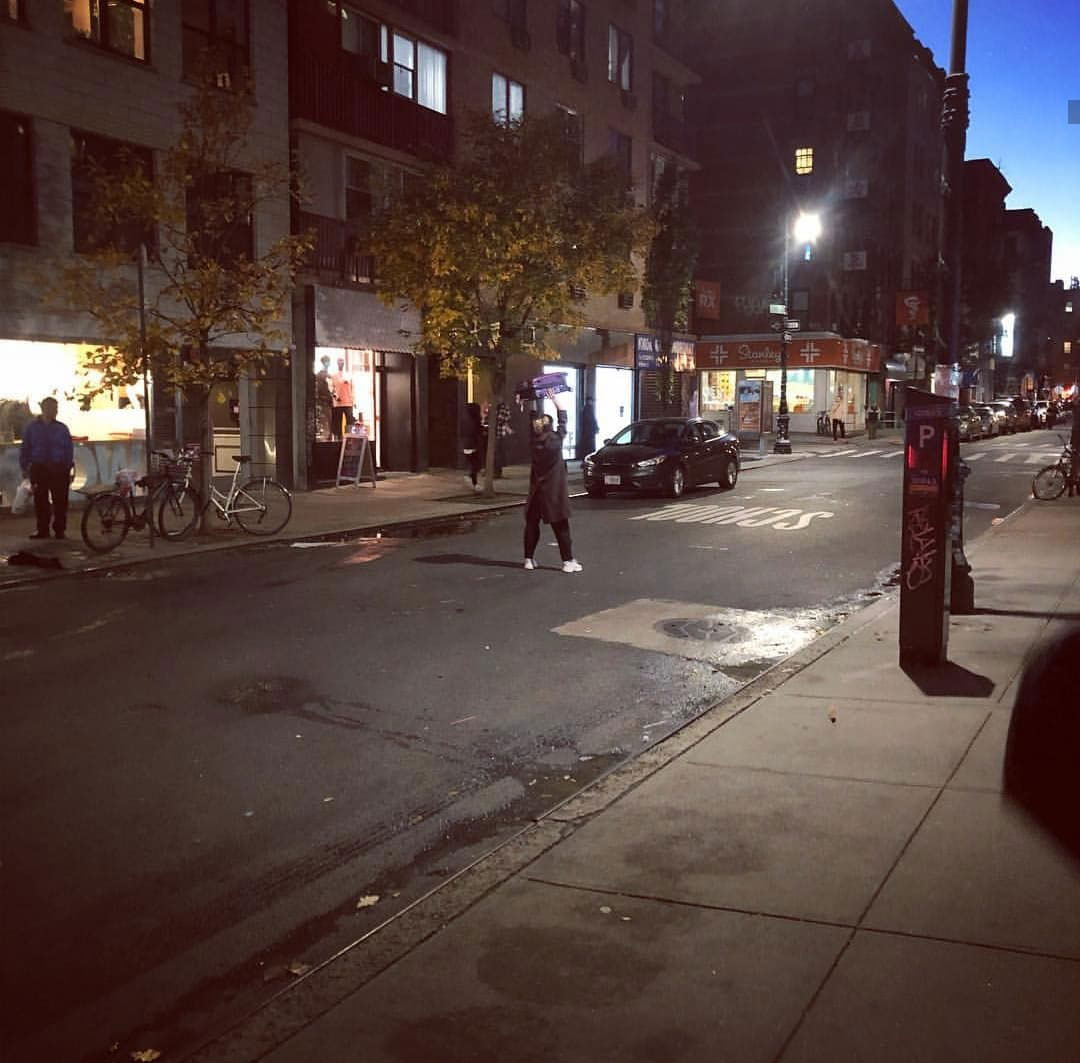Flashing lights go on and off in the still-blue Manhattan night. In the video’s last scene, which re-creates a Georgia Sagri performance in the middle of Hester Street, in SoHo, in November 2018, New York City policemen unshackle the wrists of the artist they have just arrested, reminding her that she must have prior authorization to perform in a public place. That afternoon, the artist, whose performance was announced as taking place in Essex Street gallery, decided to break with the expectations of a captive contemporary art audience. She took the step of performing outside the exhibition venue, which uses preestablished codes to assess any act taking place within it. On the other hand, she offered her gestures both to passersby and to people visiting the gallery, who crossed paths with her on their way. For three hours, she would conscientiously carry out repetitive tasks in compliance with her program. Plunging into a bustling throng, Sagri pursued her course, no more no less, which every person in the street adopted at that time. The artist began by dragging her suitcase on wheels behind her along the sidewalk, the way all low-cost transport users and other people do to get to their private rental accommodation. For a period, which the video12 only re-creates one hour of — in keeping with the video captured by people who witnessed the scene, who gave these sequences to the artist — Sagri came up with several procedures to shape the behavior of the neoliberal individual. Her conduct stemmed from an economic analysis, responding in a systematic way to alterations in the environment’s variables. She would start by gauging the weight of her luggage, held vertically in relation to the body, before giving it a horizontal trajectory along which, after having launched it, it would come to a standstill through its own inertia. Like an investment portfolio, she took her kit (clothes, a make-up bag, props) out of her luggage and lined it all up on the public thoroughfare. This exercise would be repeated several times in different directions, to underscore or, conversely, withstand the dynamic peculiar to the urban environment she was in. The market behavior whereby everyone pursues their own agenda was just a foothold, akin to the skateboarder she crossed paths with, cars parking or slowing to let her past, and sanitation workers collecting rubbish. Sagri’s somatic exploration controls the movement of a scene based on a mistimed rational order, whose aberration can only be interrupted by traffic police.
The semiotics of the household space faced by the artist are no longer reduced to the kitchen area, or even to a gender or a particular minority, as was the case in Martha Rosler’s Semiotics of the Kitchen (1975).
The semiotics of subjugation (subject, individual, I) and the somatics of enslavement (strength, power, bond) are part of the same disconnected economy. The living body, which gives material form to the crossroads of the semiotic and the somatic (index, individual, institution), is not attached to any specific site; it is nomadic and reactive, based on the circumstances of a state of emergency or a period of growth.
- Pierre Bal-Blanc





